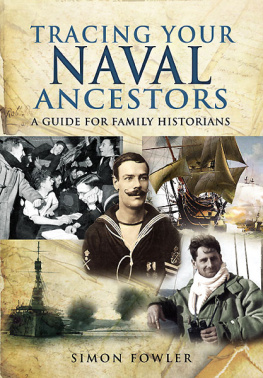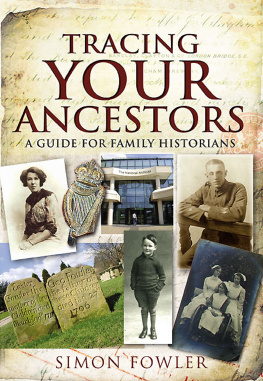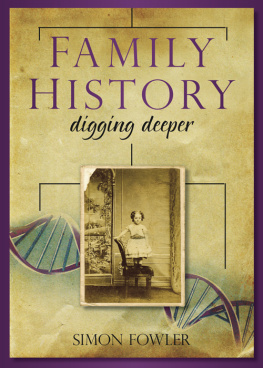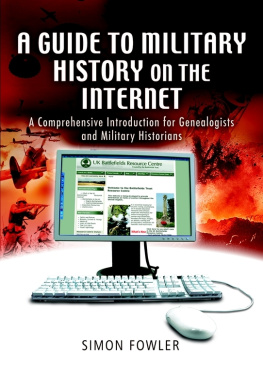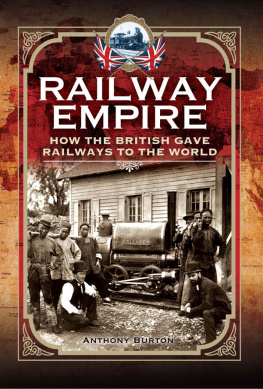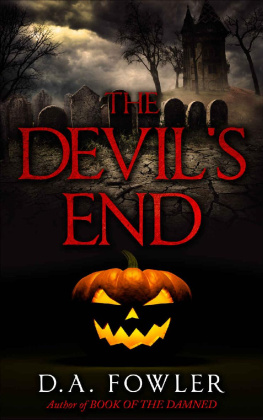Simon Fowler - Images of Transport: Railway Disasters
Here you can read online Simon Fowler - Images of Transport: Railway Disasters full text of the book (entire story) in english for free. Download pdf and epub, get meaning, cover and reviews about this ebook. year: 2013, publisher: Pen & Sword Books, genre: Religion. Description of the work, (preface) as well as reviews are available. Best literature library LitArk.com created for fans of good reading and offers a wide selection of genres:
Romance novel
Science fiction
Adventure
Detective
Science
History
Home and family
Prose
Art
Politics
Computer
Non-fiction
Religion
Business
Children
Humor
Choose a favorite category and find really read worthwhile books. Enjoy immersion in the world of imagination, feel the emotions of the characters or learn something new for yourself, make an fascinating discovery.
- Book:Images of Transport: Railway Disasters
- Author:
- Publisher:Pen & Sword Books
- Genre:
- Year:2013
- Rating:3 / 5
- Favourites:Add to favourites
- Your mark:
- 60
- 1
- 2
- 3
- 4
- 5
Images of Transport: Railway Disasters: summary, description and annotation
We offer to read an annotation, description, summary or preface (depends on what the author of the book "Images of Transport: Railway Disasters" wrote himself). If you haven't found the necessary information about the book — write in the comments, we will try to find it.
Images of Transport: Railway Disasters — read online for free the complete book (whole text) full work
Below is the text of the book, divided by pages. System saving the place of the last page read, allows you to conveniently read the book "Images of Transport: Railway Disasters" online for free, without having to search again every time where you left off. Put a bookmark, and you can go to the page where you finished reading at any time.
Font size:
Interval:
Bookmark:
First published in Great Britain in 2013 by
PEN & SWORD TRANSPORT
an imprint of
Pen & Sword Books Ltd
47 Church Street, Barnsley
South Yorkshire S70 2AS
Copyright Simon Fowler 2013
PAPERBACK ISBN: 978-1-84563-158-1
PDF ISBN: 978-1-47383-101-8
EPUB ISBN: 978-1-47382-985-5
PRC ISBN: 978-1-47383-043-1
The right of Simon Fowler to be identified as Author of
this Work has been asserted by him in accordance with the
Copyright, Designs and Patents Act 1988.
A CIP catalogue record for this book is available
from the British Library
All rights reserved. No part of this book may be reproduced or transmitted
in any form or by any means, electronic or mechanical including photocopying,
recording or by any information storage and retrieval system,
without permission from the Publisher in writing.
Typeset by Mac Style, Bridlington, East Yorkshire
Printed and bound in Great Britain by CPI Group (UK) Ltd, Croydon, CRO 4YY
Pen & Sword Books Ltd incorporates the imprints of Pen & Sword Archaeology,
Atlas, Aviation, Battleground, Discovery, Family History, History, Maritime,
Military, Naval, Politics, Railways, Select, Social History, Transport, True Crime,
Claymore Press, Frontline Books, Leo Cooper, Praetorian Press, Remember When,
Seaforth Publishing and Wharncliffe.
For a complete list of Pen & Sword titles please contact:
Pen & Sword Books limited
47 Church Street, Barnsley, South Yorkshire, S70 2AS, England.
E-mail:
Website: www.pen-and-sword.co.uk
Contents
Introduction
Railway crashes are now incredibly rare. This happy position is the work of nearly two hundred years learning from experience and a lot of trial and error. In this book we are going to look at some of the most famous accidents as well as many that have been forgotten about, even by the railway enthusiast.
Put simply the history of the railway accident is basically a history of shutting the engine shed after the train has come off the track, that is the study of the introduction of technologies and systems to prevent particular accidents happening again. Sometimes the answers are simple ensuring signalmen and driver dont lose concentration as the result of working long shifts and sometimes the answers are complicated introducing technologies to prevent trains going through red signals.
Most accidents are of course minor events, soon forgotten even by the people they involved. In two typical months January and February 2010 for example, there were thirteen reported incidents. Three trains collided with cars on unmanned crossings or the doors of drivers cabs swung open due to poor maintenance, and two freight trains derailed. Nobody was killed, although two dozen people were injured, fortunately none seriously.
It would be wrong to think railway safety improvements were introduced without opposition. Inevitably they were expensive and it was argued that because the railways were always relatively safe they were largely unnecessary. Railway companies were also fearful of the loss of profits their introduction might mean coupled with a fervent belief that government should not interfere in their business. And managers, initially, also argued their introduction would lead to lazy staff. Sir Richard Moon, Chairman of the London & North Western Railway, argued in the 1870s: These mechanical appliances were all inducements to inattention on the part of signalmen and drivers.
American railway operators mocked the British counterparts indifference to safety. The London correspondent of the New York Times in the 1870s wrote: If the choice lay between going safely and at moderate speed, or going fast with a good chance of being killed, most Englishmen would unhesitatingly pronounce for the latter.
The worst decade for safety was probably the 1870s. Investment in the permanent way and signalling had not kept up with the increasing number of trains travelling at ever-faster speeds. As a result accidents were inevitable. At Wigan on 3 August 1873, for example, thirteen people were killed and thirty injured when an express train from Euston to Scotland crashed into the station. The Railway Inspector concluded the crash was due to excessive speed and castigated the LNWR for permitting it.
Pressure for improvements came from two sources. Firstly there was public pressure to run as safe a railway as possible reflected in press stories about railway accidents. Newspapers, national and regional, ran endless stories about collisions, crashes and the resulting casualties. In the decade of the 1870s the Manchester Guardian, alone, ran at least one story in every issue about a railway disaster of one kind or another.

The crash at Wigan in September 1873 was caused by speeding through the station. It resulted in thirteen deaths and thirty injuries. The terrible impact of the collision was captured here by the Illustrated London News. Credit SSPL 10411987
Britains most influential newspaper The Times took up the cause, fulminating after the Wigan crash in September 1873: It is a national scandal, after a collision or other accident that has numbered its victims by the score to have to proclaim that the whole was due to the want of a continuous brake, or a locked connecting rod, or of some other mechanical contrivance as well known and as effectual as the lock on a street door. And for a while it had a column headed Fridays railway accidents along the lines of Court and Social.
Heavy-handed barbs against the railway companies and their complacency filled the pages of Punch, for example. The new St Pancras station opened in 1868, for example, was nicknamed St Pancrash. And in Punchs Tourists Alphabet S stood for the smash THAT is nobodys fault.
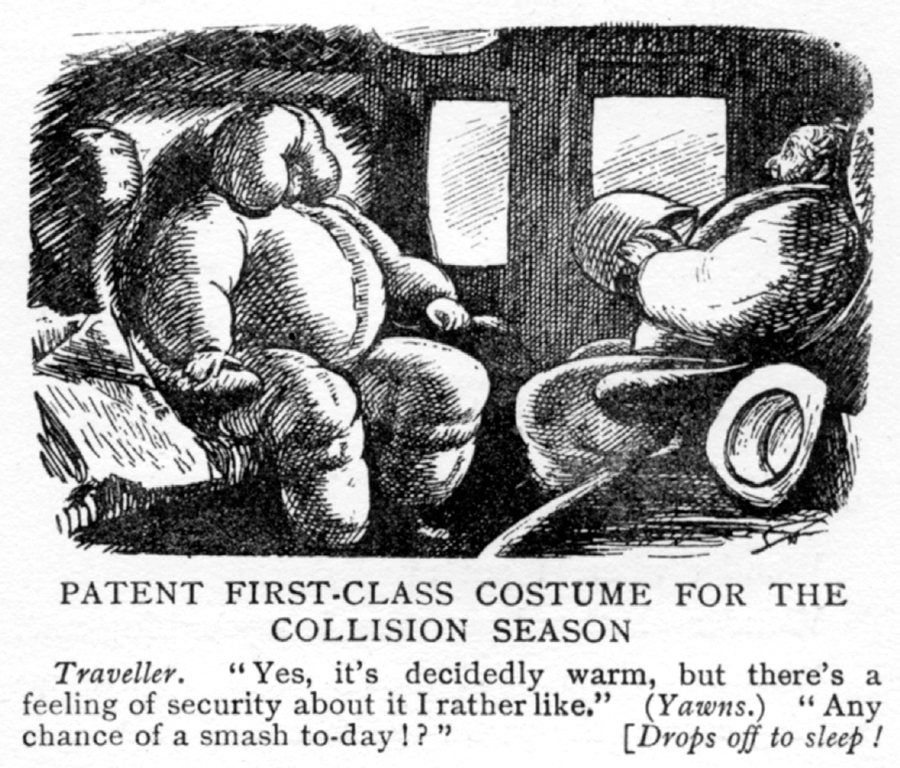
In the 1860s Punch advised its readers to dress for safety in the case of a railway smash. Credit Taylor Collection
The press had a field day with the Armagh crash in June 1889 when eighty people, mainly children, were killed and another 260 injured as the result of railway incompetence. It was the worst accident yet on the railways. Stories, like this one from the Manchester Guardian for 15 June 1889, filled the pages:
Today, like yesterday, is a day of funerals and tokens of grief and sorrow are met with at every point. A large number of interments took place yesterday evening, but the majority of the victims are being buried today. Hearses may be seen in almost every street. The engine of the train that collided remains in its original position upturned and embedded in the embankment. Numerous visitors have been to the scene of the accident today and many a camera has focused on the wrecked train. Carriage doors and windows lie mixed up with mens and girls hats, womens bonnets, buns, bread, parasols, iron flanges, boots, portions of dresses and umbrellas. All these articles bear traces of the crash.
The accident caused huge public outrage. Queen Victoria telegraphed the town council from Balmoral: The Queen is anxious to know how the injured are progressing. The government acted remarkably swiftly introducing legislation imposing minimum safety standards on railway companies. Most railways, however, already met the standards and those that did not were given four years to improve matters. Even so the accident was probably the most significant in British history. As Tom Rolt notes in Red for Danger.
the Armagh disaster represents a most significant milestone in railway history, possibly, indeed, the most significant of all. For the old happy-go-lucky days of railway working came to their ultimate end and the modern phase of working as we know it began.
Next pageFont size:
Interval:
Bookmark:
Similar books «Images of Transport: Railway Disasters»
Look at similar books to Images of Transport: Railway Disasters. We have selected literature similar in name and meaning in the hope of providing readers with more options to find new, interesting, not yet read works.
Discussion, reviews of the book Images of Transport: Railway Disasters and just readers' own opinions. Leave your comments, write what you think about the work, its meaning or the main characters. Specify what exactly you liked and what you didn't like, and why you think so.




